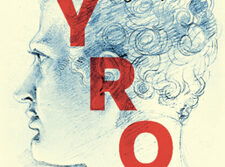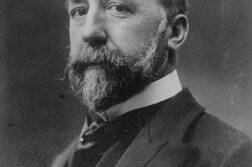IN THE LATE 1930’s, Alfred Kinsey had what he thought was a rather simple idea: given that no one had the slightest idea what people really did and did not do sexually, and given—as he discovered from a questionnaire he distributed to his students—that a lack of simple information about sex was causing massive confusion and heartache, why not do a survey that would provide some hard information about people’s sexual practices? Why not discuss the unmentionable and replace ignorance and myths about sex with information and education?
A simple idea, perhaps, but hardly a simple task. How could a group of researchers hope to get people to talk truthfully about their sexuality—about what they did sexually, what they fantasized about, how they felt about it all—when hardly anyone felt free to talk to anyone about sex in the first place?
Kinsey, a dedicated rationalist with precious little understanding of social graces, devised a disarmingly straightforward way of talking about sexual matters. He taught his researchers to project a demeanor of complete sincerity and objectivity that would put people sufficiently at ease that they would disclose their sexual histories, feelings, and innermost secrets. His basic method—a contribution to sexual science as profound and long-lasting as the data he produced—was to lead people out of their socially enforced silence around sex and into a bubble of free speech where they had permission to speak openly and honestly about sex. His way of asking questions normalized taboo sexual topics.
Kinsey understood that the most important thing was to leave both moral and psychological judgment behind, since the fear of being adversely judged is what causes people to keep sexual secrets in the first place. He instructed his staff to engage subjects personally and directly, to make it clear that the information they received was entirely for scientific use, not for prurience, and that anything confided to them would be held in strictest confidence.
In addition to the problem of getting subjects to speak honestly about sex, Kinsey also had to deal with getting a representative sample of his target population of American adults. How could he get anything close to a representative sample when he’d be lucky to get anyone to talk to him at all? People who agreed to give their sexual histories would necessarily be a self-selected, and therefore skewed, subset of the total population. Kinsey’s solution—a response acknowledged today to be less than wholly satisfactory—was to make his sample as large as possible, on the premise that sheer numbers would minimize any sampling biases. His goal was to take sexual histories from as many as 100,000 people, drawn from hundreds of distinct cultural subgroups that he identified throughout the U.S. He managed to interview just under 18,000 before the Rockefeller Foundation pulled the plug on his funding and brought his research to a skidding halt in 1954.
When the first report of Kinsey’s findings, Sexual Behavior in the Human Male—an 800-page compendium heavy with statistical tables and graphs—was published in 1948, it unexpectedly shot to the top of bestseller lists across the nation, instantly changing the information base for talking about sex in America. His parallel report on women, Sexual Behavior in the Human Female, published in 1953, was also a huge hit with the public. Not surprisingly, the two studies were as controversial as they were popular.
What Kinsey found was that American men—and, even more surprisingly, American women—were more sexually active, more adventuresome, more diverse in their sexual desires and activities, and more likely to step outside the box of socially approved sexual behavior than anyone would have imagined. Even allowing for the possible sampling errors, Kinsey’s studies made painfully clear that what Americans actually did sexually was radically different from what people had thought. Homosexuality, bisexuality, premarital sex, extramarital sex, oral sex, anal sex, masturbation , sadomasochism, sex with animals, sex with and between pre-adolescent children, sex between older people, sex with prostitutes—all of these were found to be common practices.
, sadomasochism, sex with animals, sex with and between pre-adolescent children, sex between older people, sex with prostitutes—all of these were found to be common practices.
The core assumption of post-war American culture—that the vast majority of people confined sex to heterosexual intercourse within marriage, generally in the “male-superior” position—was revealed to be categorically false. While the precision of Kinsey’s statistics on how many people engaged in various forms of “deviant” sex might be challenged, there were without question millions of Americans whose sexuality ranged all over the map of forbidden acts. And they were not all going crazy, committing suicide, getting pregnant, or dying of grossly disfiguring sexually transmitted diseases, as the popular sex mythology of the day would have predicted. “Everybody’s sin is nobody’s sin,” Kinsey proclaimed, triumphantly throwing open the doors to what has become a fifty-year-long era of sexual expansion and creativity that half of this strange country welcomes with joy and celebration, and the other half blames for just about everything wrong with the world today.
THE PUBLICATION of Kinsey’s 1948 study was the opening salvo in a war that’s been raging ever since—between science and religion, between fact and moral judgment—on the subject of sex. This ongoing conflict between secular and theological forces for control of sexual desire and behavior in America—a cultural collision as cataclysmic in 2004 as it was in 1948—forms the core of Kinsey, Bill Condon’s brilliant, complex, and thoughtful new film about Kinsey’s life and work. Enthusiastically received by just about everyone in the sexology community (sex educators, researchers, therapists, and counselors) and condemned with equal fervor by stalwarts of the religious Right, Kinsey brings into stark relief the core differences in values that continue to split this country right down the middle. It all comes down to whether you believe that Kinsey’s phenomenological, fact-based, morally neutral approach to sex is superior to faith-based moralism, which sees Kinsey’s work as a leap into an abyss of fire, brimstone, and social decay.
Among mainstream film critics there has been general agreement that, politics aside, Kinsey is a beautifully crafted, brilliantly acted, subtle, nuanced work of art. Aside from publications of the religious Right, reviewers have been close to unanimous in their praise for Kinsey and its director, Bill Condon (Gods and Monsters), as well as its lead actors, Liam Neeson and Laura Linney. Neeson has been widely acclaimed for his portrayal of Kinsey as a dedicated, somewhat dictatorial, socially awkward researcher, committed to discovering and publicizing the truth about American sexual behavior and desire regardless of its personal consequences. Linney is stunning as Clara McMillen, Kinsey’s freethinking, outspoken, appreciative, albeit long-suffering, wife. And John Lithgow brings depth to the character of Kinsey’s Bible-thumping, anti-sex father, who preaches in a sermon that “Lust has a thousand avenues—the dance hall, the ice cream parlor, the tenement salon, the Turkish bath. … Some speculate that rampant adultery is the cause of earthquakes.”
One of Kinsey’s signal achievements is the subtlety with which it examines the emerging sexual subculture of Kinsey’s associates and researchers: what develops, both socially and sexually, within a group of people whose personal and professional lives fall decidedly outside of society’s sexual norms. Kinsey, McMillen, and most of their inner circle enthusiastically act out their belief in sexual openness between consenting partners, but find that dealing with the complicated emotional consequences of their multiple involvements falls well outside the more familiar territory of maintaining scientific objectivity. To its credit, Kinsey depicts their non-monogamous path-finding as neither a lighthearted romp nor a foolhardy error of sexual excess, offering instead a sympathetic look at a group of people committed to bringing the radicalism of their sexual politics into their personal lives, and struggling—successfully, for the most part—with the potentially destructive emotional issues that their actions call into play.
Kinsey paints an amusing (and horrifying) picture of the predominant sexual culture of the 1930’s and 40’s, offering a collage of sexual misunderstandings that were widespread at that time. Cunnilingus, it was commonly believed, would result in a woman becoming infertile. Sexual intercourse was deemed the only form of sex worth pursuing—once it became available, that is, in marriage. A boy who masturbated was thought likely to be “sexually dead” as an adult. As for manually stimulating women for arousal, Kinsey offers this quote from The Ideal Marriage, the leading sexual guidebook of the day: “There is but one finger of love to approach the female genitalia and that is the male penis.” It was Kinsey’s desire to debunk these sorts of destructive myths that inspired him to undertake his monumental life’s work. “The lack of information on what people do sexually leaves most of us feeling anxious or guilty,” he instructs students in his popular course on human sexuality (available only to those who were married, engaged, or could pretend as much). “The gap between what we assume people do and what they actually do is enormous.”
Kinsey is a paean to diversity in all its forms, sexual and otherwise, a property Kinsey admired while studying gall wasps long before he became interested in human sexuality. He collected and catalogued over one million (!) gall wasps, intrigued that no two of them were ever alike. “If every single living thing is different from every other living thing,” he exults, “then diversity becomes life’s one irreducible fact.” As for humans, “everyone is different. The problem is that everyone wants to be the same. They’re so eager to be part of the group that they’re willing to betray their inner nature to get there.”
As Kinsey states in his introduction to Sexual Behavior in the Human Male, his purpose was to obtain “an accumulation of scientific fact completely divorced from questions of moral value and social custom.” This, in a nutshell, was Kinsey’s great heresy: daring to apply the methods of scientific inquiry to sex, unmediated by considerations of social convention and morality, as if sex were any other topic in human psychology. “The only way to study sex with scientific accuracy is to strip away everything but physiology,” Kinsey says. As for love: “It’s impossible to measure love, and without measurement there can be no science. When it comes to love, we’re all in the dark.”
Condon’s main purpose with this film is to tell the Kinsey story as history, but he’s clearly aware of the allegorical possibilities for our own time. Kinsey brings to life the political backlash that Kinsey faced in the 1950’s as he became swept up in the McCarthy hysteria of the day, but what he said to his critics then is eerily pertinent to the political struggles we face today: “In a Puritan culture, sex remains a dirty secret. Sexual morality needs to be reformed and science will show the way.” Challenged by a political movement seeking to discredit and undermine his work, he replies angrily: “The forces of chastity are mobilizing once again to challenge the scientist, intimidate him, convince him to cease his research.”
As conservative outrage mounted over his studies, Kinsey was accused in Congress of being part of the Communist conspiracy to undermine American morals, and pressure was brought on his financial benefactor, the Rockefeller Foundation, to disassociate itself from Kinsey’s work. Fearing a political backlash, the Foundation agreed to back out of “the business of sex research,” offering the sorry excuse that Kinsey was now in a position to get funding from other sources. That proved not to be the case. Attempts to find other sources of funds—Indiana University, the Huntington-Hartford Foundation—all failed. Seven additional books that Kinsey hoped to publish never came into being. His hope of expanding his 18,000 sex histories to a larger sample of 100,000 also never came to pass. Lost in a sea of defeat, Kinsey grew increasingly depressed. He died of a heart ailment and pneumonia in 1956, just two years after losing his Rockefeller funding.
IT IS IRONIC and, to some extent, portentous that the release of this film about Kinsey has stirred up a storm of anti-sex protest very similar to the one that Kinsey himself faced in the 1950’s. Many of the issues that made Kinsey’s work so controversial in 1948 are part of our intense national debate today. The very idea of a feature film with big stars and critical acclaim honoring Alfred Kinsey for his contribution to science infuriates conservatives. Having failed to pressure Liam Neeson to back away from the film, Christian groups mounted a national campaign to discredit both the film and its star. “Generation Life,” a college-age anti-abortion group, picketed theaters showing the film, objecting to Kinsey’s “pseudo-scientific defense of sexual perversions” and blaming him, in the words of the group’s spokesperson Brandi Swindell, “for my generation being forced to deal face-to-face with the devastating consequences of sexually transmitted diseases, pornography and abortion.” Morality in Media president Robert Peters has dismissed Kinsey as “an effort to rehabilitate a father of the hellish sexual revolution.”
In the words of Arlen Williams, a conservative Illinois columnist, “a movie is now being shown that promotes one of the most evil and destructive figures in the 20th Century. … Darwinist zoologist, sex researcher, sex research defrauder, sexual anti-moralist, sexual abuse enabler, personally sexual pervert, and pseudo-scientific high priest of the Sexual Revolution.” Robert Knight, director of the Culture and Family Institute and spokesperson for Concerned Women for America, similarly bemoans Kinsey’s contribution to the changing sex culture of the last sixty years. “Kinsey’s conclusions paved the way for condom-based sex education,” he maintains, “and furthered the agenda of pro-abortion groups. … From abortion to homosexuality to pornography, Kinsey’s research has been cited as proof [that]science has done away with societal restraints based on religious beliefs.” Knight, who says that “Kinsey’s proper place is with Nazi doctor Josef Mengele,” calls him “a sexual revolutionary masquerading as an objective scientist.”
The fact is that Kinsey was both a revolutionary and a scientist, for, in a society as irrationally anti-sexual as the U.S. was in the 40’s—and to a significant degree remains today—being a scientist who studies sex objectively automatically made one a revolutionary. In a social system based on ignorance and misinformation about sex, the very idea of scientific knowledge and open discussion about sex is subversive.
David Steinberg writes a syndicated column, “Comes Naturally,” which can be accessed on the Web at www.sexuality.org/davids.html.





